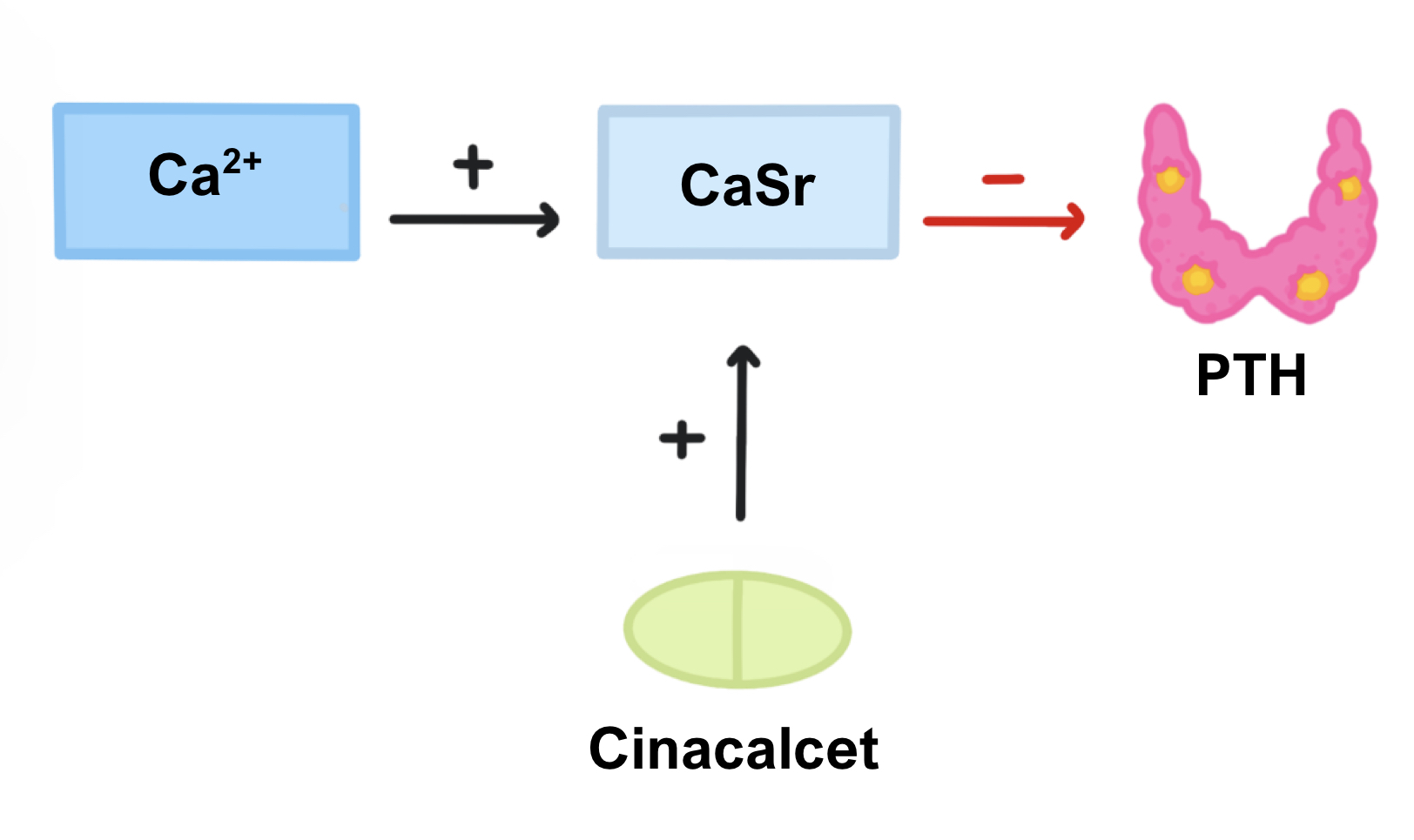Drugs Affecting Calcium
These drugs aim to mimic/antagonize the endogenous hormone PTH to maintain calcium homeostasis.
The regulation of calcium is especially important as calcium phosphate is a large component of bones.
In osteoporosis, bone turnover increases so that bone resorption is greater than bone formation, due to increased activity of osteoclasts.
Drugs which increase plasma calcium
Teriparatide
This is a recombinant version of parathyroid hormone which is a full PTH agonist.
Intermittent exposure activates osteoblasts more than osteoclasts, resulting in net bone formation and so can be used treat osteoporosis to reduce fragility fractures.
Side effects
Hypercalcemia
Osteosarcoma
Calcium and cholecalciferol
This is a combination of calcium salt and vitamin D3.
Used to increase serum [Ca2+] in hypocalcaemia and vitamin D deficiency.
Used to treat calcium and vitamin D deficiencies in patients.
Alfacalcidol
This is a vitamin D analogue which is used for hypocalcaemia.
Alfacalcidol is an active vitamin D3 metabolite, and therefore does not require the second hydroxylation step in the kidney.
This means it is particularly effective in patients with end stage kidney disease.
Drugs which increase plasma calcium
Bisphosphonates – Alendronate, etidronate (- dronate)
These are analogues of pyrophosphate (P-O-P) that bind directly to hydroxyapatite (inorganic salts) and prevent the resorption of bone by osteoclasts.
They are used in the prevention and treatment of osteoporosis and hypercalcaemia.
Side effects
Corrosive oesophagitis – patients take the drug with water and sit up for 30 minutes
Atypical stress fractures (especially of the proximal femoral shaft)
Osteonecrosis of the jaw – a rare but serious side effect causing jaw bone cells to die
Calcitonin
This is released by the parafollicular C-cells of the thyroid gland.
It interacts with osteoclasts to stop the reabsorption of calcium from bone.
It reduces hypercalcaemia due to Paget’s disease and hyperparathyroidism.
It is also used as a marker of medullary carcinoma, a thyroid cancer that presents with
localised amyloidosis due to the polymerisation of pro-calcitonin into beta-sheets.
Cinacalcet
The parathyroid gland senses calcium levels via the protein CaSR.
This drug activates CaSR which reduces serum PTH levels. It decreases plasma [Ca2+] and so is used to treat hypercalcaemia secondary to hyperparathyroidism.

Denosumab
This is a monoclonal antibody which blocks the action of RANK ligand.
RANK ligand usually binds to the RANK receptor and promotes osteoclast activity.
This drug reduces osteoclast activity and so is used to treat osteoporosis.
It is more used in post-menopausal women who are intolerant to other drugs or have renal failure.
Disclaimer




